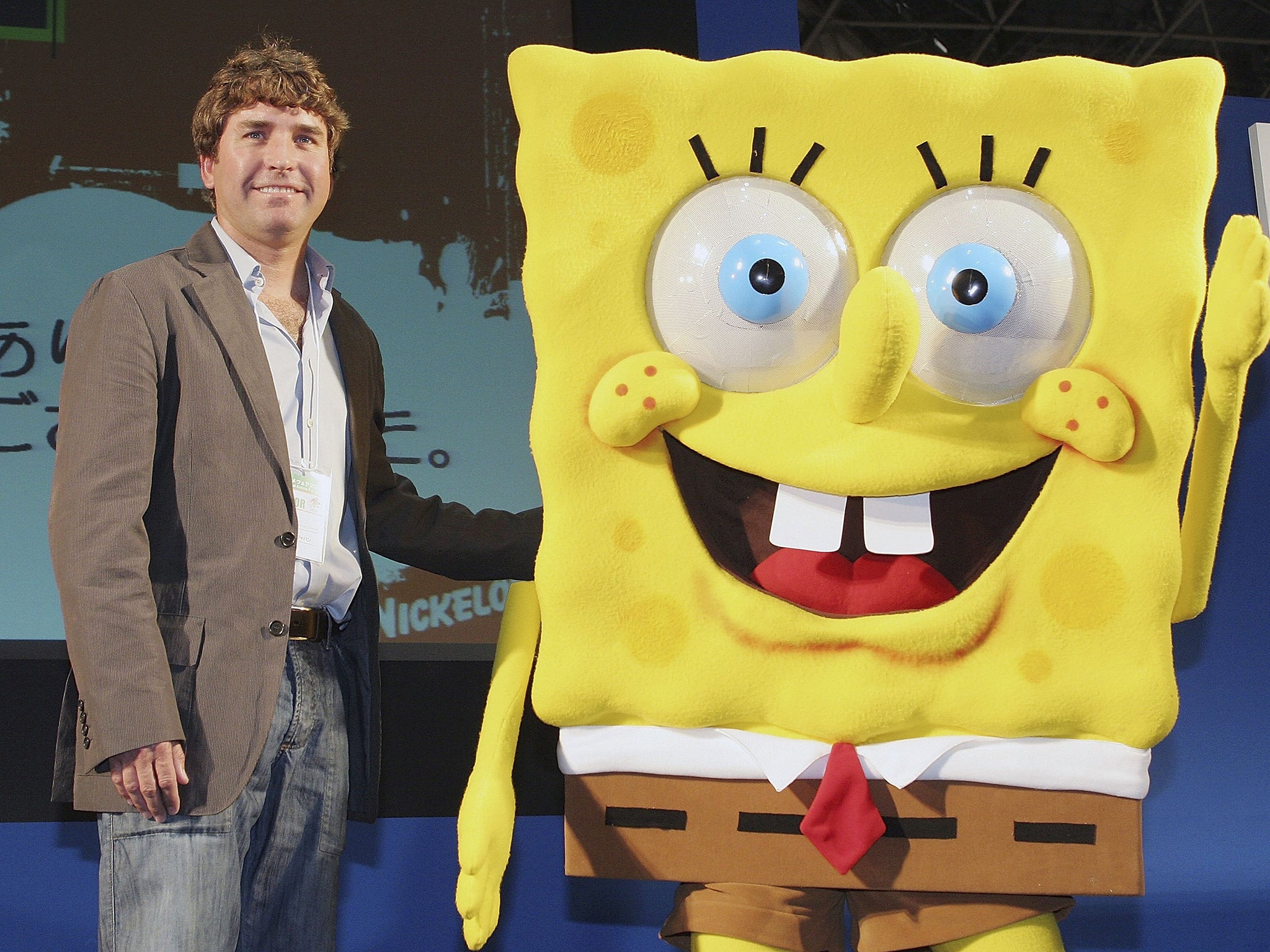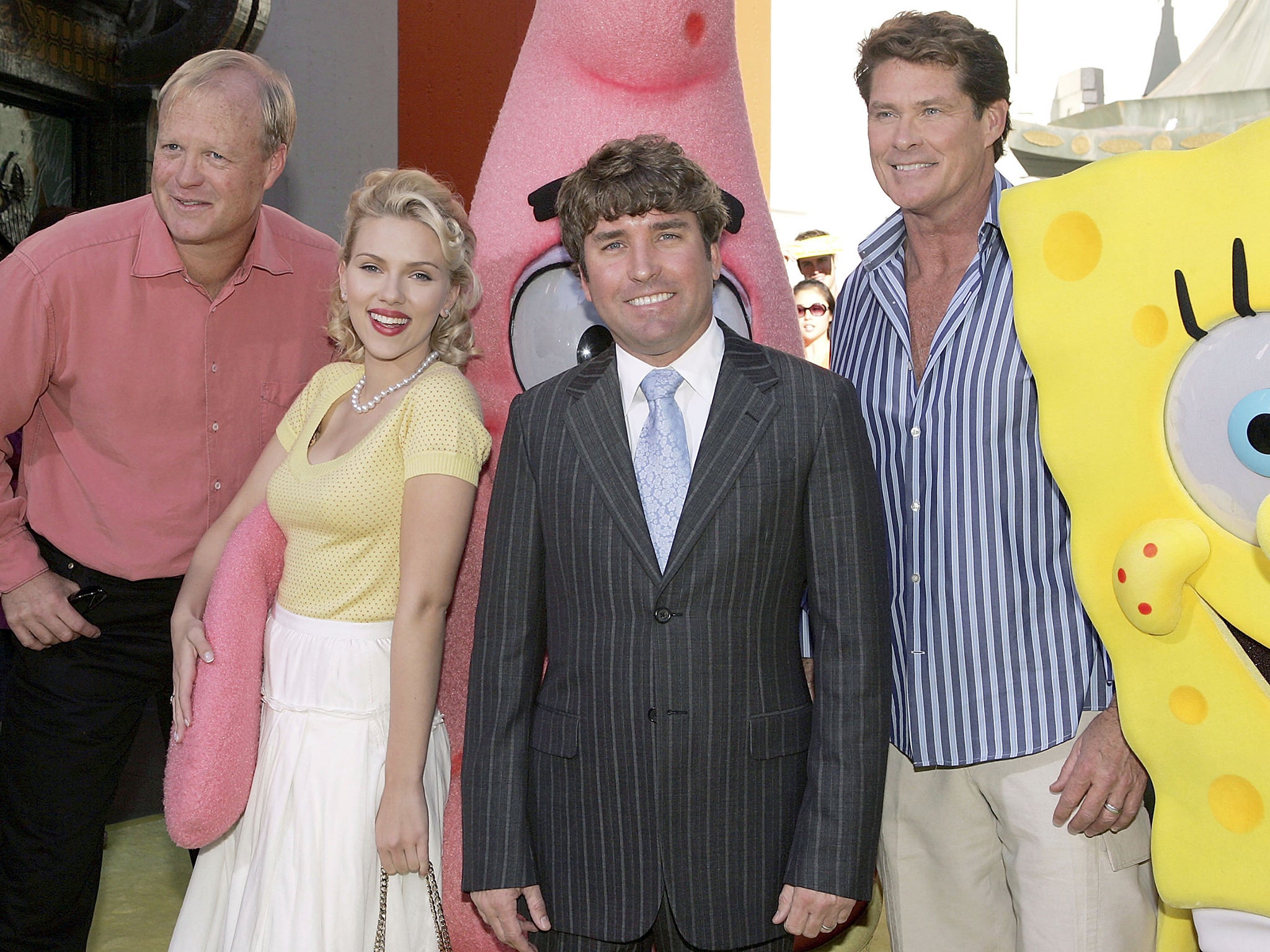Stephen Hillenburg: marine biologist who created SpongeBob SquarePants
His fascination with what goes on beneath the sea led him first to academia and then the bright lights of children’s TV and Hollywood

Your support helps us to tell the story
From reproductive rights to climate change to Big Tech, The Independent is on the ground when the story is developing. Whether it's investigating the financials of Elon Musk's pro-Trump PAC or producing our latest documentary, 'The A Word', which shines a light on the American women fighting for reproductive rights, we know how important it is to parse out the facts from the messaging.
At such a critical moment in US history, we need reporters on the ground. Your donation allows us to keep sending journalists to speak to both sides of the story.
The Independent is trusted by Americans across the entire political spectrum. And unlike many other quality news outlets, we choose not to lock Americans out of our reporting and analysis with paywalls. We believe quality journalism should be available to everyone, paid for by those who can afford it.
Your support makes all the difference.When he chose animation as a career, Stephen Hillenburg, creator of SpongeBob SquarePants, was prepared for life as a “starving artist”. The animator and producer, who has died of motor neurone disease aged 57, did not expect his quirky cartoon set in a tide pool to attract anything more than a cult following.
Yet SpongeBob SquarePants is now the fifth longest-running cartoon series in the US and counts former president Barack Obama as a fan. Superstars who have voiced Hillenburg’s characters include Johnny Depp and David Bowie. The series has won four Emmy awards and netted more than $12bn (£9.1bn) in merchandising revenue. Hillenburg didn’t have to starve after all.
Stephen McDannell Hillenburg was born in Fort Sill, Lawton, Oklahoma in 1961. His father worked for the US army and his mother was a teacher. A year after young Stephen was born the Hillenburg family moved to Anaheim, California, where his father began a new career in the aerospace industry.
At school in California, Hillenburg showed early promise as an artist. At the same time, he was fascinated by ocean life. He loved the underwater documentaries of Jacques Cousteau, while his interest in animation was sparked by a visit to the Tournée of Animation festival at the LA County Museum of Art. There he saw Dutch animator Paul Driessen’s surreal film The Killing of An Egg. Hillenburg later explained: “That was the film that I thought was uniquely strange and that lodged itself in my head early on.”
As an undergraduate, Hillenburg combined his two interests at Humboldt State University where he studied marine biology, taking art as a second subject. When it came to finding work, marine science initially won out.

Soon after graduating, Hillenburg took a job teaching marine biology to children at the Orange County Marine Institute.
To help make his lessons more interesting, Hillenburg wrote a comic book called The Intertidal Zone. The comic featured a number of anthropomorphic sea creatures, including one called Bob the Sponge. Hillenburg was unsuccessful in getting the comic published outside the institute, but the experience of writing and drawing the characters reignited his artistic ambitions. He went back to college, gaining a master’s in experimental animation from the California Institute of Arts.
While studying for his masters, Hillenburg made a short film that attracted the attention of Joe Murray, creator of the Nickelodeon cartoon series, Rocko’s Modern Life. Murray offered Hillenburg his first professional job in the animation world, as a director on Rocko. A stint as a writer on Rugrats followed. But soon Hillenburg wanted to create something of his own.
He returned to The Intertidal Zone for inspiration. Bob the Sponge actually looked like a sea sponge, as befitted his educational role, but Hillenburg wanted his new main character – SpongeBob – to have a physical appearance to match his personality. He settled on a square kitchen sponge as a model, saying it “seemed to fit the character type I was looking for – a somewhat nerdy, squeaky-clean oddball”. SpongeBob SquarePants combined Hillenburg’s knowledge of the ocean, his passion for animation and his love of old-time comedians, such as Laurel and Hardy. SpongeBob was an innocent in the Stan Laurel mould, to Patrick the starfish as Hardy.
SpongeBob SquarePants first aired in the summer of 1999 and it quickly became clear that Hillenburg and Nickelodeon had a hit on their hands. By 2003, it was the highest rated children’s series on television. With more than 60 million viewers, it was franchised all over the world. Explaining the show’s international success, Hillenburg suggested, “I think it’s because of its simplicity. Everybody recognises the childlike character.”
In 2004, though Hillenburg had said he didn’t think SpongeBob would work in long form, he wrote and directed SpongeBob SquarePants the Movie.
While he felt that the film was, in his own words, “decent” and indeed it grossed more than $140m, he maintained: “I still honestly believe the best shows are the simplest short shows, for what SpongeBob is … We keep it simple and keep it about the characters.”
However, there was a second SpongeBob movie, which out-earned the first. Grossing $323.4m worldwide, it was the second highest-grossing film based on an animated television show, beaten only by The Simpsons Movie. In 2016, SpongeBob was adapted as a Broadway musical, with songs by Cyndi Lauper and Steven Tyler.
Around the time of the first SpongeBob movie, Hillenburg stepped back from being the show’s writer to become an executive producer and pursue other projects. He made a short film called Hollywood Blvd, USA, which featured animations of people walking.
Together with his chef wife Karen and their son Clay, Hillenburg moved to San Marino, where he indulged his hobbies of surfing and scuba diving. A self-described “Band geek” who had played trumpet as a school boy, Hillenburg also found time to play rock music with his son.
Throughout his life, Hillenburg remained devoted to the delicate ocean eco-system. Perhaps for that reason, he tried to retain a veto over SpongeBob merchandising. In an interview with the The New York Times, Hillenburg’s colleague Sherm Cohen described the moment when SpongeBob got his own doll. Surely a proud moment for any cartoon character’s creator? Not so for Hillenburg. Cohen explained: “Stephen looked grim. He said, ‘My biggest nightmare is that I’m going to be at the beach one day, and one of these dolls is going to wash up on the shore like garbage.’”
Hillenburg also did his best to ensure that SpongeBob was not associated with any fast food brands. However, he failed to prevent the first SpongeBob movie from having a tie-in with Burger King.
The interests of the TV business and the environment were hard to marry but Hillenburg still harboured a dream that SpongeBob could contribute to eco-awareness. In 2001, Hillenburg was recognised by Heal The Bay for his contribution to elevating awareness of marine life. He later told The Washington Post: “People have to get together and [realise] how important our oceans are … It takes care of us ... Hopefully, if you watch SpongeBob, you see plankton and crabs and starfish – and you’ll [want to] take care of our oceans.”
Hillenburg was diagnosed with motor neurone disease in 2017. He is survived by his wife and their son Clay. A third SpongeBob movie is currently in production.
Stephen McDannell Hillenburg, animator, born 21 August 1961, died 26 November 2018
Join our commenting forum
Join thought-provoking conversations, follow other Independent readers and see their replies
Comments